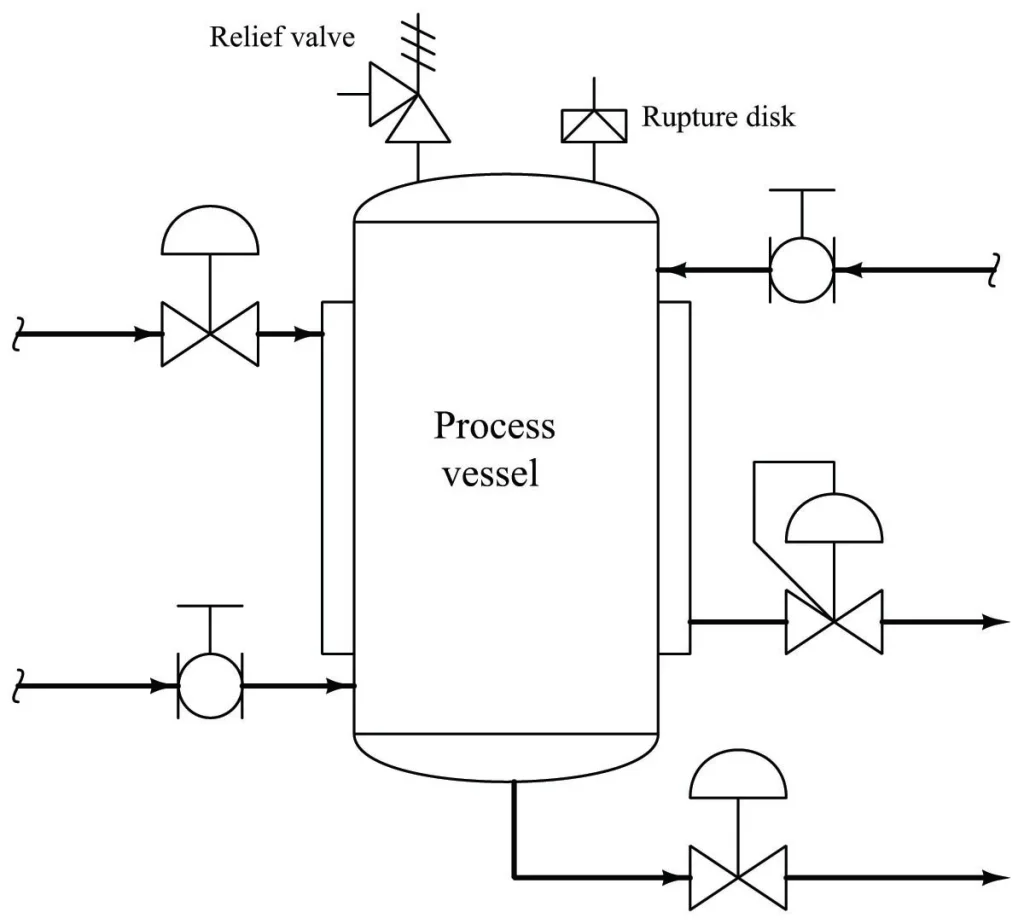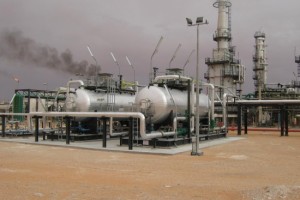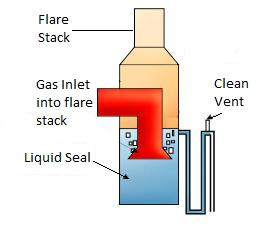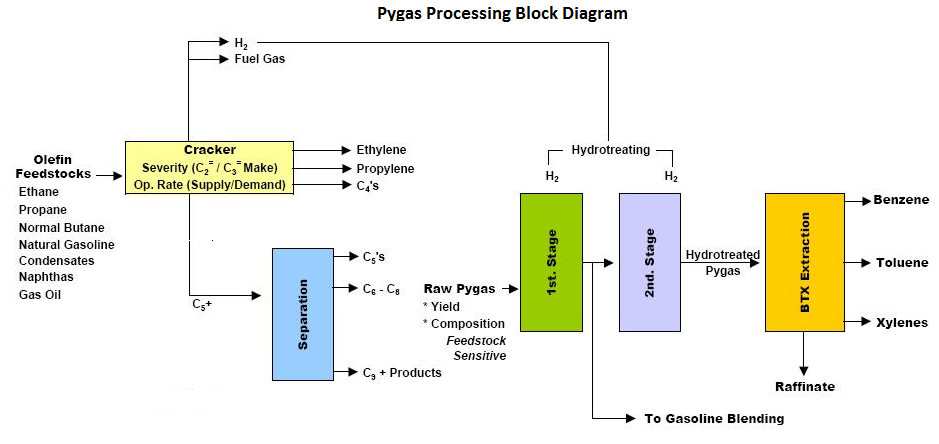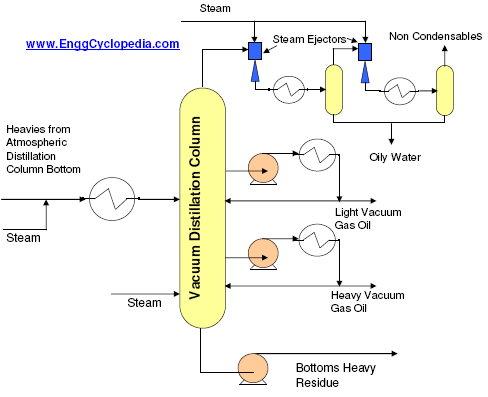Separator vessels, storage tanks, heat exchangers, columns and certain piping segments etc. are designed to handle certain operating pressure. However combination of a variety of causes may lead to over pressure in these equipments which may exceed the maximum allowable working pressure (MAWP) value. Pressure Relief valves (PRV) are used to relieve the pressure in these equipment before it can cross the maximum allowable working pressure, thus protecting the equipment from damage. The pressure relief valve set point should be such that relief valve will open before the maximum allowable accumulated pressure (MAWP) is reached in the vessel. For this purpose usually a hydraulic calculation should be done for PRV discharge line to determine the back pressure at the relief valve, which on addition to the pressure drop across pressure relief valve gives the pressure accumulation the equipment.
The PRV size is based on a minimum relieving flowrate which can prevent the build up of pressure in the protected equipment from exceeding the MAWP limit. For several possible causes of over pressure in the vessel, relieving flowrates are calculated and the maximum of these flowrates is selected for PRV sizing. The over pressure cause corresponding to this flowrate is then known to be the governing case for pressure relief valve sizing. Some common causes of over pressure which are considered for pressure relief valve sizing are described in this article.
Blocked discharge case
This case refers to closure of a valve on the outlet of equipment (vessel, heat exchanger etc). If the fluid still continues to flow into the equipment, absence of an outlet for this fluid results in fluid accumulation and build-up of pressure. This pressure build-up can go as high as the design pressure of upstream pumps or compressors combined with the height of the liquid column upstream. The normal inlet flow in this case in this case should be considered as the minimum relieving flowrate. EnggCyclopedia's PRV sizing calculator for blocked liquid discharge and for blocked gas discharge can be used to design a pressure relief valve for these scenarios.
Inadvertent opening of upstream valves
Inadvertent opening of valves located at high pressure sources upstream to the protected equipment can result in over pressure in the equipment. This flow can drive the equipment pressure upto design pressure of the upstream high pressure source. The extra flow coming as a result of valve opening should be relieved in this case to protect the equipment.
Utility failure
Failure of utilities such as electricity, instrument air, steam, fuel, cooling water etc. can result in over pressure in related equipments. When analyzing the possibility of over pressure in equipment, possibility of utility failure should be carefully considered. For instance, electricity (for air cooler fans or cooling water circulation pumps) or cooling water failure may result in failure of heat exchangers to meet the duty. Resulting rise in process temperature can cause over pressure in the protected equipment.
Partial failure
In case one source of utility fails but another independent source is still available in parallel to bear complete or part of the extra load caused by partial utility failure, the partially available utility can be considered to evaluate possible over pressure in the protected equipment. Thus, independently available utility alternatives can lower the risk of possible over pressure and should be given consideration at the design stage.
Heat exchanger tube rupture
The tubes in a heat exchanger are prone to failure due to variety of reasons such as corrosion, vibration, thermal shock etc. In such a case flow of fluid from high pressure side of the exchanger to low pressure side causes overpressure on the low pressure side of the exchanger. In this case, the ability of the low pressure side to absorb this overpressure has to be examined and requirement of a relief valve has to be reviewed.
Fire case
Equipment exposed to plant fire has a risk of overpressure in case of fire, resulting from fluid expansion or vaporisation. EnggCyclopedia’s PRV sizing calculator for liquid filled vessel and for gas filled vessel can be used in this case for design of the PRV.
Transient pressure surge
Possibility of ‘water hammer’ in a liquid filled system has to be carefully evaluated, since a pressure relief valve is usually not able to protect equipment against ‘water hammer’ where pressure can rise to many multiples of operating pressure in matter of milliseconds. PRV takes much longer time to respond to such overpressure creating possibility of equipment damage. Pulsation dampener has to be used in this case as a protection measure. In case of systems filled with gases, ‘steam hammer’ can occur similar to the water hammer.
Process change / Reaction change
In some cases, a significant change in operating process parameters (such as temperature of a cryogenic fluid) can change making the equipment susceptible to damage (temperature of equipment drops below minimum design metal temperature or MDMT). For reacting systems, reactions can shift equilibrium resulting in excess gas or excess heat thus causing over pressure. These possibilities have to be carefully examined for designing the relief valves.
